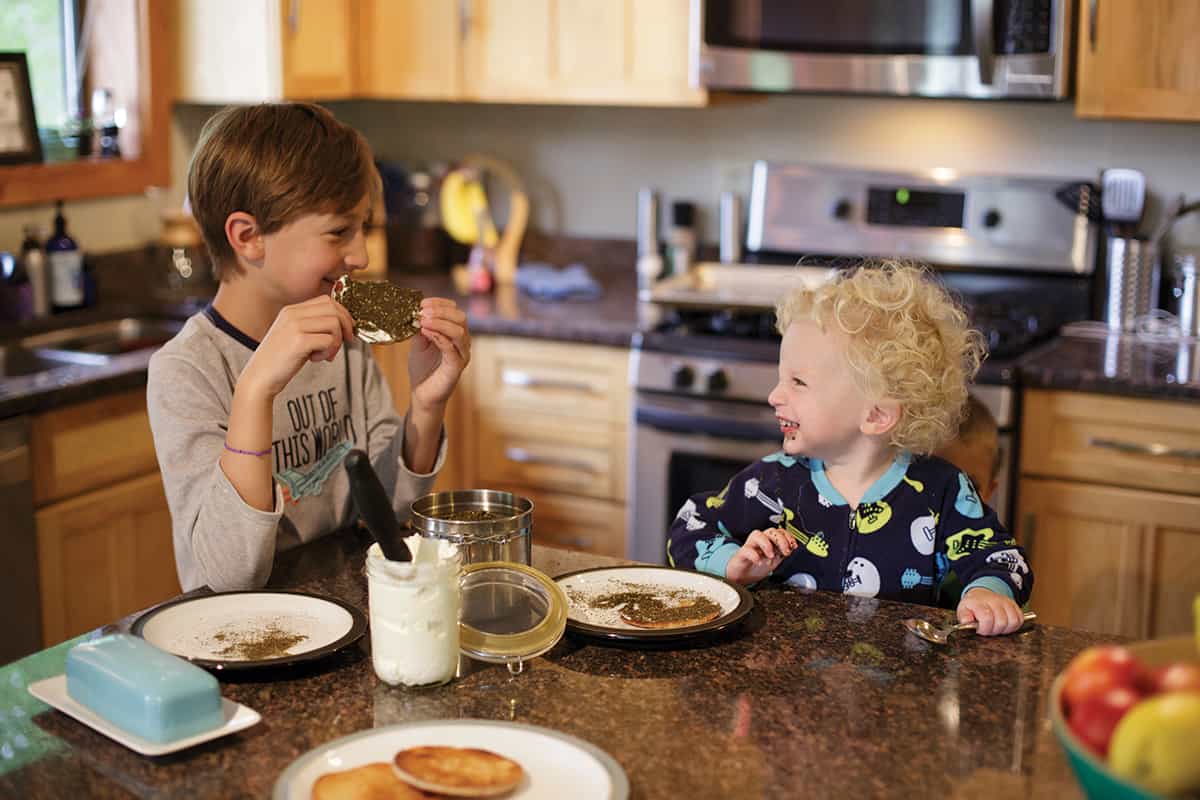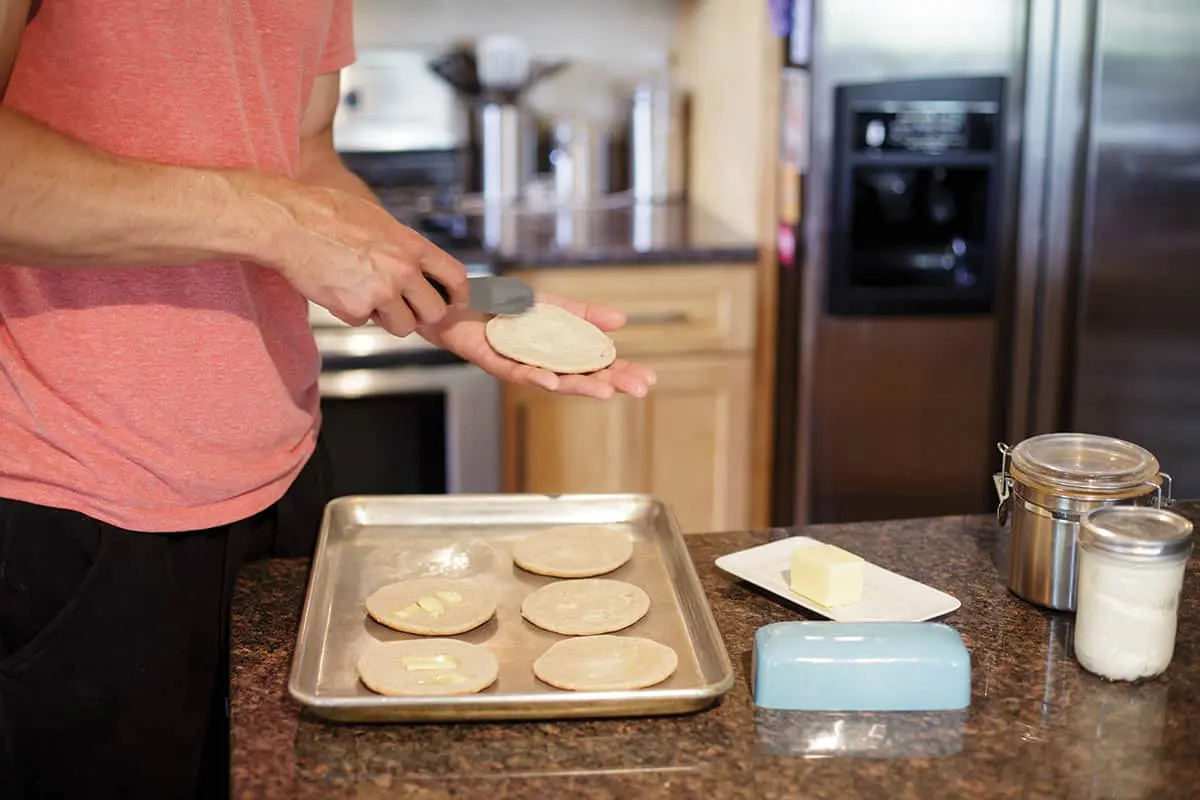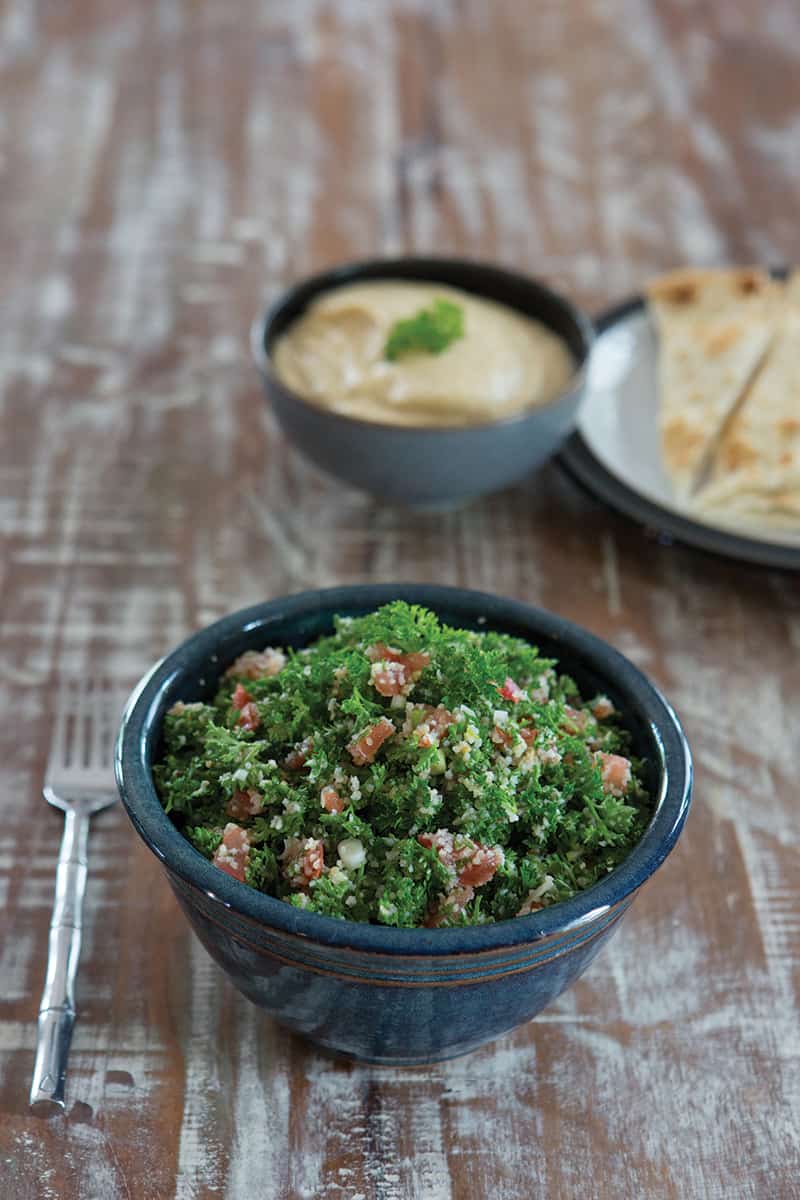By Christina Shepherd McGuire // Photographs by Kisa Koenig
–
As a toddler, I vaguely remember sitting diaper-clad in the middle of a field of string beans. The midday Pennsylvanian sun shone down on me as my parents spent their weekend sticky from humidity and furiously picking. I sat among plants twice my height, sampling the ends of beans and then spitting them on the ground. As the story goes, my father and a work colleague decided to grow a saleable green bean crop that summer. But my mom wasn’t exactly on board. The last thing she wanted to do was spend her weekends tending a field of beans, small child in tow. Still, dad learned from Papap (his father) that cultivating the land could reap great results. Needless to say, we ate a lot of beans that summer …
As I grew older, every seasonal celebration gave my mother’s Italian family an excuse to eat. During such gatherings, the hosts rarely left the kitchen, and overflowing bowls of homemade pasta would magically appear. I remember making pasta for these gatherings with my grandfather. First, we’d shape a volcano of flour on the table with a hole in the middle. Then I’d dump in the eggs. Together, we’d mix the flour and eggs until it was too hard for me to knead the dough (at that point I usually bailed to go play). Once I returned, we fed sheets of floured goodness through the steel pasta maker over and over until it produced paper-thin fettuccine. Moments later, it disappeared into the pot.
I still recall the smells, sights, and magic of cooking with my grandfather and gardening with my parents. These traditions, adopted from both sides of the family, created a unique set of customs deeply rooted in family heritage.
Food Traditions in America
Throughout the world, food is used to celebrate holidays, family gatherings, and seasonal harvests. Here in the United States, our ethnic melting pot—or “salad bowl,” if you will—forms a quagmire of cultures, each bringing their own traditions and customs.
Sounds like the perfect setup, right?
Well, unfortunately, according to some experts, the modern availability of processed foods, the busyness of American households, and the introduction of genetically modified commodities have caused us to lose touch with our roots, thus creating a dumbed-down version of American food culture. According to Gary Paul Nabhan and Ashley Rood, co-editors of Renewing America’s Food Traditions: Bringing Cultural and Culinary Mainstays from the Past into the New Millennium, “In the United States, a decline in traditional ecological and culinary knowledge has led to a decline in the food rituals that link communities to place and cultural heritage.”
Nowadays, for some busy families, cooking is regarded as just one more thing on the “to do” list. A mother’s role has shifted from one of homemaker to professional, leaving little time or energy to educate children about food. And many families have moved away from home, distancing themselves from grandparents and their generational teachings.
As British chef Jamie Oliver explains, “Many people in the last three generations weren’t taught to cook at home or at school. … The truth is that our priorities have completely changed. … We have lost touch with real food, and the time has come to readjust.”
The Importance of Food Traditions
It’s hard to imagine in this new era of “artisanal” everything that our American food culture has lost its soul, and that preparing and eating food has become just one more thing that families rush through. However, even if you didn’t grow up with special customs or rituals, it’s never too late to start your own, and here’s why:
Experts claim that family food rituals equate to a lower incidence of substance abuse, teen pregnancy, depression, and problems in school.
Cooking from scratch and growing your own food teaches children patience and exposes them to a culinary art. And passing down traditions helps connect children to their family history, developing a sense of pride that comes from learning and practicing a custom unique to them. Additionally, food traditions—especially if they involve a trip to the farm or local specialty purveyor—connect families to their community and help establish relationships formed around food.
What Exactly is a Food Tradition, Anyway?
After surveying a group of local families, I was surprised by just how much the practices differ from family to family. Most friends’ traditions revolve around the holidays, such as making cookies together from a family recipe.
But others note simple habits like serving and trying one steamed veggie at dinner every night. Still others treasure passed-down teachings—like canning and preserving—that instill “real life” skills.
Local photographer and mother Kisa Koenig grew up in a family with a Lebanese matriarch. As a kid, she remembers her mother’s Syrian toast that was first buttered, then broiled, and then topped with a spice mixture called “za’atar” combined with olive oil. Koenig and her two siblings adored the dish, often demanding “bread with dirt on it,” which is how they referred to the za’atar.
“My mom has always been a feeder,” says Koenig, noting that her kids eat best and get more excited about food when her mother is visiting. As babies, Koenig’s boys gobbled up za’atar on toast and labanee, a traditional cultured yogurt cheese. Today they enjoy kibbee (a spiced meat and bulgur dish), fattet betenjan (an eggplant casserole) and many other dishes.
During the summer, the Koenigs gather with their extended family for a cousins’ weekend that involves traditional cooking, socializing, drinking, and lots of pool time. “Everybody is so excited [at the gathering]. The kids feel the vibe and really get into it, so they try more [food],” Koenig explains. She likes the sense of identity and belonging that it gives her kids, noting that, like all of us, she’d love to incorporate more of these traditions into their everyday life.
Laurie Rider, of Driggs, Idaho, acknowledges that her family doesn’t have any strong religious, ethnic, or historical ties to a particular cuisine. Still, she explains, “I think food has always been central to how I see our family functioning as a unit.” She says her family uses mealtimes, shopping at farmers markets, and cooking new recipes to relax, talk, and check in with one another.
As a child, her mother worked full time and enlisted Rider and her two brothers to help with the cooking, so by the time she left for college she had a “decent repertoire of crowd-pleasing meals.” Now, as a working mom herself, she uses cooking with her daughters as an opportunity to multitask and says that life lessons happen all the time in the kitchen. “Sharing, taking turns, kindness, math, and science—it’s all right there in front of you when you cook!” she explains.
How to Create Your Own Traditions
Harvest season is the perfect time to start a new tradition. Mark a date in your fall calendar and plan your weekend schedule around your ritual.
Begin by taking your kids to the farmers market and having them pick out their favorite fruit or veggie. Then try your hand at preserving this bounty with a generational recipe or research a new one. Jams and sauces are good picks and double as gifts come the holidays. Your children will take pride in giving gifts to teachers and friends that were made by them, together with you. Additionally, there’s no greater delight than opening a can of summer’s freshness in mid-winter. Kids will remember and look forward to these tastes year after year.
Nearly everyone remembers picking pumpkins or apples when they were young, so visit a local farm or orchard. Schedule a tour of the farm, arrange to feed the animals, and then pick your own seasonal produce. Then, make pies or applesauce using a timeless family recipe. And as you cook, side by side with your children, explain the meaning of the recipe and teach them cooking techniques that reflect both safety and your family’s personal style.
For me personally, growing up with food traditions has shaped my interests and values. By passing this set of values on to my own children, I hope to arm them with ideals that will influence their decisions in life. This cultivation of food awareness, respect for the earth, and personal nourishment will not only benefit them as they grow from children to adults, but it will also foster the survival of a food culture that needs some multigenerational help.
Traditional lebanese tabouli
—
Makes 4 sides
—
Traditional Lebanese tabouli is really a parsley salad. It uses only a small amount of bulgur and doesn’t incorporate cucumber or feta.
“I would never go to all the trouble and not at least double this recipe. The most time-consuming part is picking the parsley.
You have to only get the leaves, so no chopping it all up with stems! The boys help with this.” – Kisa Koenig
For the dressing:
1/3 cup canola oil (or use olive oil for a slightly different flavor)
1 tablespoon fresh mint, chopped
Juice of 1 lemon
Salt and white pepper (careful!) to taste
For the salad:
1/4 cup bulgur wheat (medium)
1 giant or 2 small tomatoes
4-5 green onions, chopped
1 bunch parsley (curled, not Italian), leaves only, no stems
1. Combine dressing ingredients. Set aside.
2. Wash wheat in cold water until water runs clear. Don’t soak! Squeeze out excess water and place wheat in a large bowl.
3. Dice tomatoes and put on top of the wheat.
4. Pour dressing on top. Then add chopped onions and parsley.
5. Mix well and add more dressing if desired.
Labanee
(American shortcut version)
—
Makes approximately 3 cups
—
Traditional labanee involves first making your own yogurt with whole milk, a starter, and heavy (muslin) towels. However, you can still make the cheese using this American shortcut.
1 32 oz. container of Dannon plain yogurt (or any other yogurt that
does not contain starch or pectin, such as Nancy’s)
1 teaspoon salt
Muslin bag or nut milk bag
Baker’s twine
1. Pour yogurt into the center of the muslin or nut milk bag.
2. Tie a knot and hang bag overnight from your cupboard handles with twine, placing a bowl underneath.
3. In the morning, unwrap your cheese and use on toast topped with za’atar (source online or make your own) or your favorite topping, or just grab a spoon!







